|
The Comic Annual, 1830-39, 1842 | |
Sequence |
Volumes [1]–[10], 1830–39 |
Editor |
Thomas Hood, 1830–39, 1842 |
Publisher |
Hurst, Chance, and Co., 1830 |
Printer |
Bradbury and Dent, 1830 |
Price |
12s. (1830, 1831) |
Format |
Fcp. 8vo. |
Pages |
176 (1830), 326 (1842) |
Frequency |
Annual |
Circulation |
Unknown |
Indexes |
All volumes: Table of contents, List of Illustrations |
Copies |
Sheffield University Library (vols 2, 5, and 7) |
Introduction | |

The Comic Annual was the initiative, and very largely the production, of Thomas Hood (1799–1845). The son of a London publisher and bookseller, Hood had been apprenticed as an engraver before turning to journalism, first as sub-editor of the London Magazine and then as drama critic for the Atlas newspaper. In 1828, he became editor of the Gem, one of the new 12s. fashionable literary annuals which, since the commencement of the Forget Me Not in 1823, had enjoyed a great vogue as Christmas gift-books (Erickson 1996, pp. 29-31). However, while the Gem was a success, selling more than 7,000 copies, Hood quarrelled with the publisher over terms, and they parted after only one volume (Reid 1963, p. 101). It was in this situation that, late in 1828, he began to project his Comic Annual. Hood's new periodical emulated the literary annuals in its genteel price and format, its transparent wholesomeness, and its studied juxtaposition of poetry, prose, and illustration. Usually issued in time for Christmas, it competed in the market for gift-books, suitable for a respectable family audience. Hood's work was, however, highly innovative in its devotion to exclusively comic material. He had already published a quantity of comic verse, and had also written for the comic theatre. In devoting his annual to comic material, Hood not only established his own reputation as a leading comic writer and illustrator, but also did much to develop a new form of comic journalism. 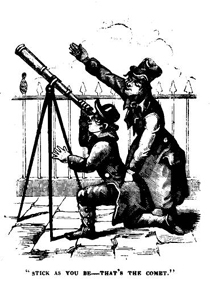
The Comic Annual was not the first humorous periodical to be published in nineteenth-century Britain, but it was the first to appeal to a respectable family audience. Earlier journals of political satire, like the Age (1825–43), had frequently descended into scandal, and were certainly not considered suitable for respectable family reading. By contrast, as Hartley Coleridge observed, the Comic Annual had proved that 'there may be fun without mischief, jest without malice, and wit without bawdry' (Reid 1963, p. 113). Of course, the new monthly literary magazines of this period, led by Blackwood's Edinburgh Magazine, also contained some humorous material—both satirical and otherwise—but by its exclusive dedication to humorous matter, and its use of illustration, the Comic Annual pioneered a new form that was to prove immensely popular. Within a year, it had to compete with a New Comic Annual (1831–35) and a Comic Offering (1831–35), and it was subsequently joined by a burgeoning range of comic journals. For the first Comic Annual, Hood acted as he had as editor of the Gem, soliciting contributions from a number of his acquaintances. However, while he obtained materials from his friend and brother-in-law John Hamilton Reynolds, the poet Horatio Smith, and the authoress Isabel Hill, and included a Keats sonnet written for his mother-in-law, Hood wrote most of the volume himself. The first volume also included illustrations by George Cruikshank, Frederick Branston, and John Reynolds, as well as by an unidentified Miss A. Knight. With subsequent volumes, however, Walter Jerrold reports that he was responsible for 'almost the whole of the work, letterpress and illustrations' (Jerrold 1907, p. 253). This is a slight overstatement, and while almost the entire letterpress was written by Hood (with the notable exception of a contribution from George Raymond in volume 6), he continued to use illustrations by others. The Comic Annual nevertheless occupied a large proportion of Hood's time over the course of a decade. It also brought him a steady income—enough to pay his yearly expenditure (Morgan 1973, p. 361). Due to other demands, however, Hood found it necessary to flee creditors by moving to Germany in March 1835, and he remained on the Continent until 1840. He nevertheless continued to produce the annual in exile with the assistance of his friend the engraver John Wright, sending manuscript and shipping inscribed woodblocks for engraving in London (Reid 1963, pp. 146 and 150, and Morgan 1973, passim.). 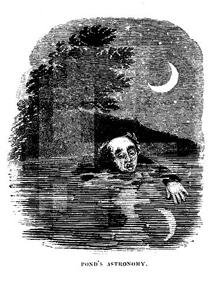
The exact circulation of the Comic Annual is unknown. However, Hood's handsome remuneration, taken together with the circulation figures of 5–15,000 copies which we have for the literary annuals of the 1820s, suggest that it must have sold at least several thousand copies. In addition, in some years upwards of five hundred copies were sold to booksellers in the United States (Reid 1963, pp. 121-22, and Morgan 1973, pp. 234-35.). Hood was particularly pleased that, while there was some falling off from the 'palmy days' of 1830, the Comic Annual subsequently continued to maintain its circulation while its competitors fell away (Morgan 1973, pp. 337, 346, 357, and 361.). By the late 1830s, however, Hood's eyes had been opened to a larger market by the immense success of Charles Dickens's Pickwick Papers. The shilling parts of Dickens's illustrated comic work appeared monthly between March 1836 and October 1837, and by the end its circulation had risen to 40,000. This brought forcefully home to Hood that there was 'a tarnation powerful large class, who can and would give one shilling a month, and cannot put down twelve shillings at once for a book'. As a result, Hood planned a monthly re-issue of the Comic Annual, and quickly concluded terms with his publisher A. H. Baily (Morgan 1973, pp. 338-39). The first number of Hood's Own; or, Laughter from Year to Year, Being Former Runnings of His Comic Vein, with an Infusion of New Blood for General Circulation was issued in January 1838, priced one shilling. Amounting to thirteen monthly numbers in all, Hood's Own drew mainly on the Comic Annual, but also included additional material. While no circulation figures are known, it was a considerable success, and was reissued throughout the century, a second series (also containing material from the Comic Annual) being produced by his son in 1862 (Reid 1963, p. 166). 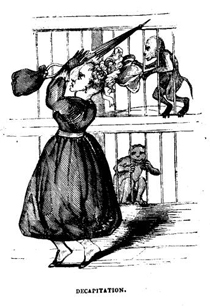
Hood had not had happy dealings with the publishers of the Comic Annual. In the hands of Hurst, Chance & Co., the printing of the first volume had been a fiasco, but on breaking with them, Hood was furious to find them issuing a New Comic Annual in competition. Four years later, Hood broke with Charles Tilt, considering him dilatory, and in 1840, having had opportunity to examine how A. H. Baily was keeping his books, Hood broke with him, too (Thorogood 1981, and Reid 1963, p. 176.). Embroiled in legal disputes with Baily, but back in London where he could more readily write for other periodicals, Hood allowed the Comic Annual to lapse. He began to contribute extensively to the New Monthly Magazine, but by April 1841 he was planning a new series of the Comic Annual (Morgan 1973, p. 455). The volume he produced in November of that year contained a number of items previously published in the New Monthly Magazine, and following his appointment as editor of that journal in August 1841, no more Comic Annuals appeared (Reid 1963, p. 193). | |
Notes on Indexing | |
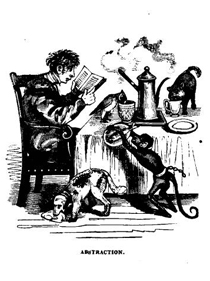
The format of the Comic Annual was broadly consistent throughout, with an undelimited mixture of short fiction, sketches, spoof letters and reports, burlesque odes, and comic ballads. Only in the last volume—where 'Miss Kilmansegg and her Wooden Leg' and 'A Friend in Need' each ran to more than a hundred pages—were any individual pieces dominant, both of these having previously been serialized in the New Monthly. Science, technology, and medicine were as fully subject to Hood's wide-ranging comic invention as any other aspect of culture. Much of the humour was broad and obvious, often relying for effect on physical comedy and the outrageous puns for which Hood is so well known. Thus, for instance, an early illustration, entitled 'Fancy Portrait: Galileo' depicted a man gazing at the sky from a balcony, his optical instruments and attire making his head resemble a snail with protuberant antennae. The Comic Annual was frequently topical in its themes, notwithstanding Hood's lengthy sojourn on the Continent, but such topical allusions did not typically involve sharply focused satire. Thus, for instance, Hood's 'Ode to M. Brunel' included a 'Fancy Portrait', depicting a man with his mouth wide open and looking somewhat like a tunnel. Occasionally, however, Hood's humour took on a properly satirical cast, and this use of satire somewhat increased over time. A common object of his satirical humour was religious cant, as in his 'Ode to Spencer Perceval, Esq., M.P.', where he attacked the Irvingite Perceval's call for days of national fasting in relation to the spread of cholera, asking: 'The best of our physicians, when they con it, / Depose the malady is in the air: / Oh, Mr. Spencer!—if the ill is there— / Why should you bid the people live upon it?'. Since Hood's humour was not typically focused on a specific satirical object, and since his word play and comic asides were incessant, references to science, technology, and medicine, appeared throughout the pages of the Comic Annual, and there were few articles which did not have some such reference. Most of these passing references cannot easily be abstracted and require some explanation in the index. Indeed, even in extended pieces, like 'The Friend in Need', a general summary cannot cover the many unrelated puns and droll digressions, which demand separate treatment. The visual humour of the many illustrations also usually requires verbal clarification. For this reason, the descriptions of the articles in the index for the Comic Annual are often somewhat extended. 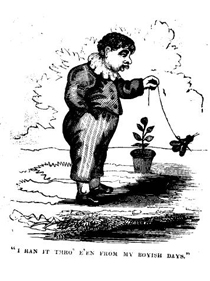
Most of the articles were written anonymously. However, since, after the initial volume, the text was reportedly all written by Hood, our index identifies all the anonymous articles as being his productions. Only occasionally are these attributions based on specific evidence, which is separately recorded. The illustrations, while chiefly designed by Hood, were not exclusively so. However, the illustrators are all identified in the lists of plates attached to each volume of the Comic Annual, and these lists have been used in preparing the current index. While there exist lists of plates for each volume, these do not give directions as to where the plates were intended to be bound, presumably because, like most gift books, the Comic Annual was issued in a publisher's binding, with gilted edges. The copies in Cambridge University Library have been rebound, and in some cases the original location of the plates has been disrupted. In these cases, we have surmised the proper location of the plates on the basis of context. Many of the separate illustrative plates relate only tangentially to the articles in the middle of which they appear. In those cases where the plate is relevant to this index, but the original article is not, the plate has been treated as a separate article, and included on its own terms. | |
Bibliography | |
Erickson, Lee 1996. The Economy of Literary Form: English Literature and the Industrialization of Publishing, 1800–1850, Baltimore: Johns Hopkins University Press. Jerrold, Walter. 1907. Thomas Hood: His Life and Times, London: Alston Rivers. Morgan, Peter F., ed. 1973. The Letters of Thomas Hood, Edinburgh: Oliver and Boyd. Reid, J. C. 1963. Thomas Hood, London: Routledge & Kegan Paul. Thorogood, Peter 1981. 'Thomas Hood: A Nineteenth-Century Author and His Relations with the Book Trade to 1835', in Development of the English Book-Trade, 1700–1899, ed. by Robin Myers and Michael Harris, Oxford: Oxford Polytechnic Press, 106–72. | |
Jonathan R. Topham | |